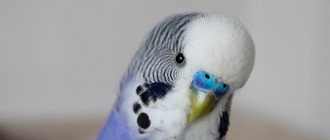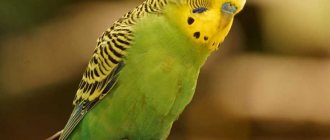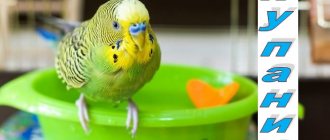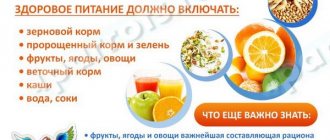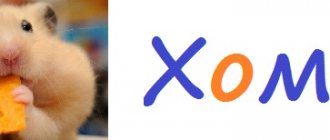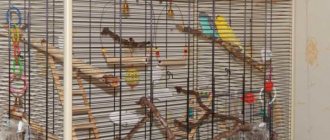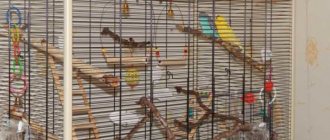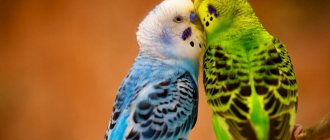Trimming a parrot's claws is an element of mandatory care. Without this, the pet begins to experience discomfort. When you need to trim a parrot's claws yourself at home, you need to follow the subtleties of the procedure so as not to harm the bird. It is recommended to watch a video on how to do it correctly before starting the manipulation. During the procedure, it is permissible to use not all types of manicure accessories. In order not to have to cut it often, they follow measures to prevent the regrowth of claws, the same for all types of parrots - cockatiel, royal, wavy, gray.
Natural nail polishing
The birds' paws are tenacious and well-developed, each of the 4 fingers, two of which are directed forward and two directed back, ends in sharp claws. This structure helps to grasp branches, take food and other objects. But if the claws are long, the task becomes more difficult for the parrot. In their natural habitat, the bird wears them off independently during physical activity. They are shortened due to the following effects:
- running on rocks and ground;
- landings, movements and take-offs from branches;
- picking and holding fruits in the paws.
On a note!
At home, your pet can shorten its own claws. But, if one of them reaches a critical length and the parrot does not gnaw it on its own, it will break off and the paw will be injured.
Preventive measures
Replace the plastic perch with a wooden one.
If the owner is primarily concerned with the peace of mind of the pet and in order not to expose it to a stressful environment, immediately after purchase, care should be taken to fill the cage with natural materials that will help grind down the claws naturally. After purchase, it is advisable to replace all plastic elements in the enclosure with wooden ones. Ladders and toys are selected from solid natural wood. It is advisable to place pebbles and tree bark of different textures inside the home .
If the pet is tame, then it is periodically released for a walk around the room, after closing the windows and doors and removing other pets.
An important component is the diameter and material of the perch on which the pet sits. The thickness of the perch should be at least 15 mm, so that the bird’s fingers wrap around three-quarters of it. If the fit is correct, the claws will wear out spontaneously. A plastic perch is considered unsuitable. A hard surface can injure the paws and the empty cavity harbors parasites that are life-threatening for the pet. The ideal perch is an established branch cut from a fruit tree.
Choosing food for parrots.
Why do you need to trim your parrot's claws?
Poultry often experience discomfort from excessively long nails. Often this condition is the result of incorrectly selected equipment for the pet - a perch of the wrong size, lack of edging made of natural fibers. In order for the claws to shorten naturally, the cage must be equipped with wooden perches. Their thickness should be such that the bird cannot completely wrap its paw around it - then the claws will begin to touch the rough layer of the perch, gradually grinding off against it.
Nevertheless, a haircut is necessary, since such a trim may not be sufficient. The manipulation must be performed for the following reasons:
- The parrot has discomfort when walking on flat surfaces.
- Unnatural distribution of pressure due to incorrect positioning of the paws - the toes are raised up, this provokes pain in the bird.
- Excessively long claws prevent the parrot from sitting comfortably on the perch.
- A pet sitting on the arm or shoulder will scratch the skin of the person holding it, which is quite unpleasant.
- While scratching, a bird can accidentally injure itself with a sharp claw.
- The pet will strive to solve the problem on its own - this often causes various injuries to the bird.
- If the claw is too long, it can split and break, causing bleeding - the parrot will feel severe pain.
It is better to trim the parrot's claws at home, otherwise there is a high probability of serious injury to the bird's paw. This happens because the bird clings to a cage, tulle or something else, but cannot let go of the object and continues to move. The result of this situation can be a dislocation, and in some cases, a fracture of the pet’s paw. In the best case scenario, the bird will tear out its claw.
Attention!
Overgrowth of claws can occur due to liver disease, knemidocoptosis (mite infestation), impaired metabolism and poor diet, poor living conditions or previous finger injuries. Therefore, it is worth monitoring the condition of the bird’s claws in order to notice the problem in time.
When should you cut your hair?
It is necessary to trim a parrot's claws in the following cases:
- the pet walks on a straight surface, and its fingers bend high;
- The bird touches various materials with its claws and with great difficulty frees itself from them.
In order for the feathered “friend” to avoid injury, the claws must be carefully trimmed.
Note that the frequency of cutting will depend on the growth of the claws. The norm is considered to be up to 7 mm in the front and up to 5 mm in the rear.
How to properly trim the claws of a budgie, cockatiel and others at home
When the bird trusts the person and does not show concern, you can trim alone, but it is more convenient to do it together. To determine the length of the cut part, you need to look through the claw into the light - the veins (capillaries) will become visible, they cannot be touched. The part free from them is divided mentally into 3 and the outer third is cut off. The end should be straight; you cannot cut it at an angle. It is also prohibited to file claws. Correct procedure:
- put on gloves and place the bird on the palm with its back, fixing the wings and head;
- the claw is trimmed in one movement, without delay;
- make sure that other fingers do not get caught between the rings of the scissors.
When the parrot is very worried about the procedure, you can treat 1 finger per day. Trimming nails often causes stress in birds. To calm the bird, you need to first prepare a treat for it, which is given upon completion of the manipulation. After trimming, the pet is left alone for several days - any procedures are contraindicated, as are worries. You can let a parrot out of its cage, but only if the bird comes out on its own - you cannot force it to do anything. It is recommended to appease small species of parrots (budgies or lovebirds) by hanging a new toy in the cage.
Possible dangers
Many may ask, what does overgrown claws hinder a pet? In addition to the physical discomfort that the parrot feels when walking on flat surfaces, it experiences pressure and pain in its paw. Long claws do not allow the pet to sit comfortably on the perch , and when trying to scratch itself, the pet injures itself.
If the bird has the ability to fly out of the cage, then it is quite likely that when landing on textiles, a sharp claw will catch on the fabric, and in trying to free itself, the parrot will, at best, experience stress. In the worst case, the claw is everted, the paw is dislocated or broken. If the pet is used to moving around the apartment on the owner’s shoulder, then the owner of the feathered friend will feel pain from the tenacious legs.
If the owner is afraid of causing injury during the procedure, then to trim the pet’s claws, they take it to the clinic, where a specialist will perform the manipulations.
What tools will you need for a haircut?
Before trimming a parrot's claws at home, you need to prepare the appropriate tool. The main thing is a guillotine (claw cutter), which you can buy at a pet store. If there is no such item, it is permissible to use sharp nail scissors. In addition to the tool, you should also keep ready:
- antiseptic;
- cotton wool;
- hemostatic agent.
On a note!
Hydrogen peroxide can be used as a hemostatic agent. But in pet stores there are special powders that easily stop bleeding and do not cause burns.
Rules of procedure
To shorten the claws of parrots, you will need the following devices.
- “Nail clipper” or tweezers from a manicure set. The first tool can be easily purchased at any pet store.
- Gloves made of thick material.
- Cotton pads.
- Hemostatic powder. If it is not available, you will need a weak solution of potassium permanganate.
First of all, the bird must be held correctly. Namely, we take the parrot so that its back is on the palm protected by a glove. With the other hand (also wearing a glove), we carefully pull out the feathered pet’s finger with an overgrown claw and look through the lamp light to see where the capillary is located. We retreat 2-3 mm from it and with one clear movement of the “claw cutter” we cut off the tip of the claw. The cut must be blunt, as a sharp one will lead to injury to the bird in the future. Next, using a nail file, you need to remove all the irregularities from the cut line.
If blood appears, do not panic! Use a hemostatic powder or soak a cotton pad in peroxide or a solution of potassium permanganate (weak) and apply to the claw until the bleeding stops (about 5-7 minutes).
If the parrot behaves nervously, breaks out and bites, then call your household for help. They will help you hold the bird correctly, and you will continue the process of removing the overgrown horny bases on the fingers of your feathered “friend.”
After the claw trimming procedure, the parrot is in a stressful state. To bring your feathered pet back to its senses, give it a treat or a new toy. The parrot should not be disturbed for about a day after trimming its claws - it should calm down.
If you doubt your ability to independently help a bird get rid of long claws, then take your pet to the clinic. An experienced specialist will perform this procedure quickly and painlessly.
What to do if there is bleeding
Regardless of the degree of care taken when trimming a parrot's claws, there is always a risk of bleeding. This usually occurs when there is slight damage to the foot itself or the capillary layer in the plates. To eliminate bleeding, you should moisten a piece of cotton wool or sponge in hydrogen peroxide and lightly press on the damaged area. As a replacement, it is permissible to use any other hemostatic agent or manganese crystal.
A clot should form at the site of injury, which should not be touched until complete healing. It is recommended to wash the area with chlorhexidine for 1-2 days. If blood gets on the feathers, it should also be washed off with peroxide, and then rinsed with water from a spray bottle. The parrot may be lethargic for the first 24 hours, but then everything will stabilize and it will begin to eat and behave as usual. If the bleeding cannot be stopped, you should urgently consult an ornithologist.
Prevention of claw regrowth
The growth of a parrot's claws in its natural environment is limited, therefore, as a preventive measure, various methods are used to bring living conditions as close as possible to natural ones. To do this, you should reduce the bird's stay on soft surfaces - the back of the sofa or the owner's shoulder. In order for the parrot's claws to have time to grind down, you need to ensure:
- Balanced diet with added vitamins and minerals suitable for poultry.
- Using perches (diameter no less than 1.5 cm) and ladders made of natural untreated wood - better with bark.
- Adding stones to the platforms, on which the parrot can also sit and grind off its claws.
On a note!
Proper surfaces only help slow down regrowth, so you shouldn’t expect long nails to shorten on their own - they will still have to be cut.
Trimming a parrot's claws is one of the important procedures when keeping such a pet. They can lengthen significantly and lead to injury. But pruning should be done with caution, following the rules, which include preparing the tool, calming the pet and being attentive. To prevent long claws, it is recommended to take preventive measures - install suitable perches and add more hard surfaces.
Is it possible to file down claws?
Trimming parrots' nails is not an easy task, especially if you have little experience in this matter. Many owners who have recently become owners of cute pet birds mistakenly believe that for the purposes of basic hygiene it is better to file the horny processes on the pets’ paws with manicure files rather than trim them. Any experienced parrot owner will confirm that this approach is extremely wrong, and a veterinarian or ornithologist will completely prohibit these rash actions.
Although filing can result in neater and less sharp claws compared to trimming them with nail scissors or tongs, this procedure is potentially dangerous for the bird and can cause negative consequences.
